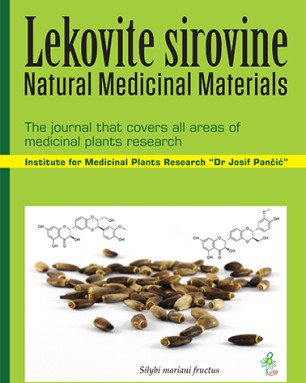Institute for Medicinal Plant Research “Dr. Josif Pančić” , Belgrade , Serbia
Institute for Medicinal Plant Research “Dr. Josif Pančić” , Belgrade , Serbia
Institute of Botany and Botanical Garden “Jevremovac”, Faculty of Biology, University of Belgrade , Belgrade , Serbia
Institute for Medicinal Plant Research "Dr. Josif Pančić" , Belgrade , Serbia
Institute for Medicinal Plant Research "Dr. Josif Pančić" , Belgrade , Serbia
Institute of Botany and Botanical Garden"Jevremovac", Faculty of Biology, University of Belgrade , Belgrade , Serbia
Biological activities of Sorbus aucuparia L. leaves extract was tested in our study. Antineurodegenerative activity was evaluated by acetylcholinesterase (AChE) and tyrosinase (TYR) inhibitory activity assays while antioxidant activity was by tested using four different assays. In all antioxidant test we noticed concentration dependent activity of tested extract and the highest applied concentration of 500 μg/ml was the most active. Extract applied in concentration of 200 μg/ml showed higher percent of inhibition in DPPH test compared to both applied concentrations of standard substances BHA and BHT (50 and 100 μg/ml). In ABTS test, activity of extract applied in 500 μg/ml was comparable or higher then BHA and BHT/Vitamin C, respectively. Moreover, all concentrations of tested extract were significantly more active in ß-carotene test than vitamin C. The lowest concentration of extract (100 μg/ml) was the most active in TYR assay reaching 42.57 % of the inhibition while in AChE assay there was not statistically significant differences among all applied concentrations.
This is an open access article distributed under the Creative Commons Attribution License which permits unrestricted use, distribution, and reproduction in any medium, provided the original work is properly cited.

The statements, opinions and data contained in the journal are solely those of the individual authors and contributors and not of the publisher and the editor(s). We stay neutral with regard to jurisdictional claims in published maps and institutional affiliations.